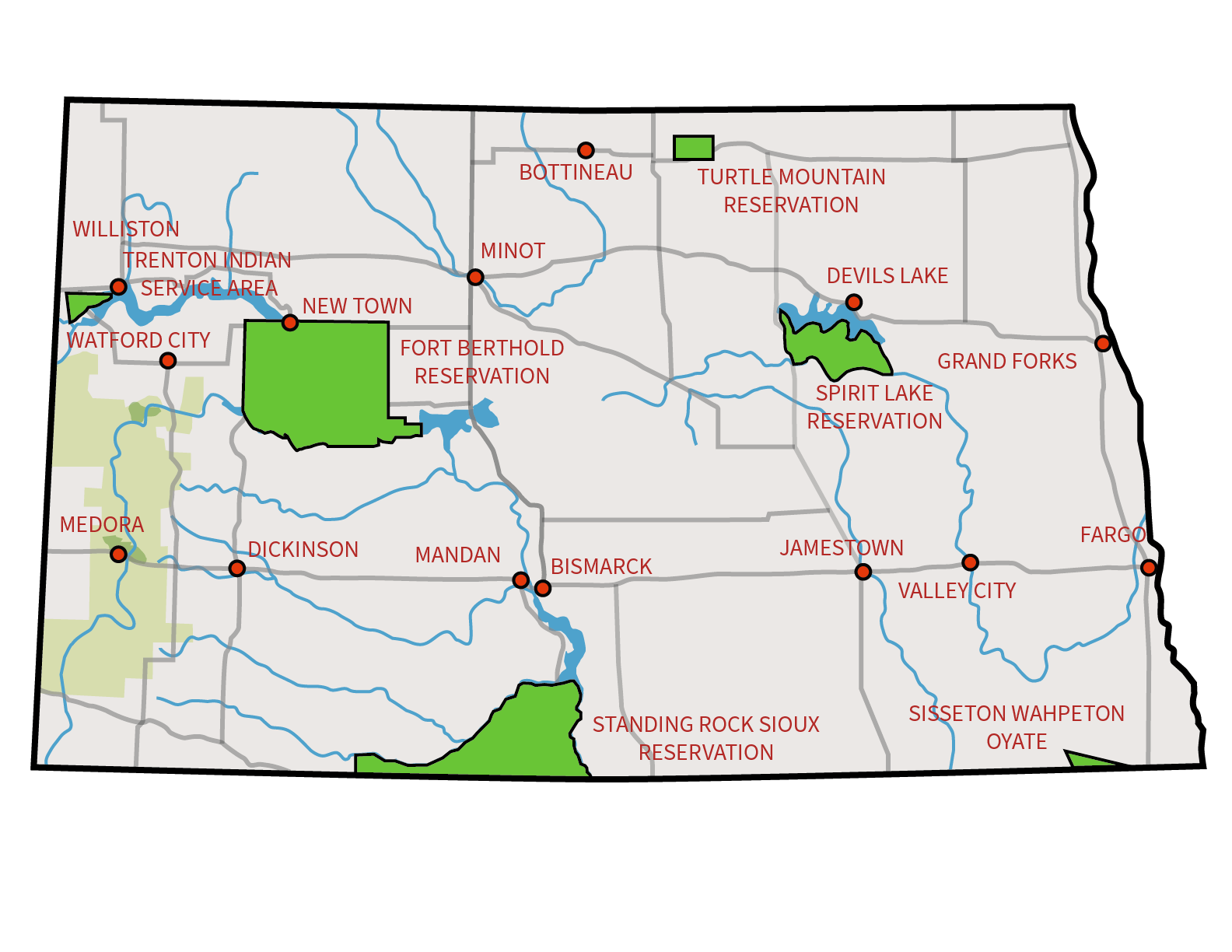
There are five federally recognized Tribes and one Indian community located at least partially within the State of North Dakota. These include the Mandan, Hidatsa, & Arikara Nation (Three Affiliated Tribes), the Spirit Lake Nation, the Standing Rock Sioux Tribe, the Turtle Mountain Band of Chippewa Indians, the Sisseton-Wahpeton Oyate Nation, and the Trenton Indian Service Area.
In total, there are 31,329 American Indians living in North Dakota, making up 4.9% of the total population. Almost sixty percent live on reservations and over forty percent of these American Indians are under the age of 20.
